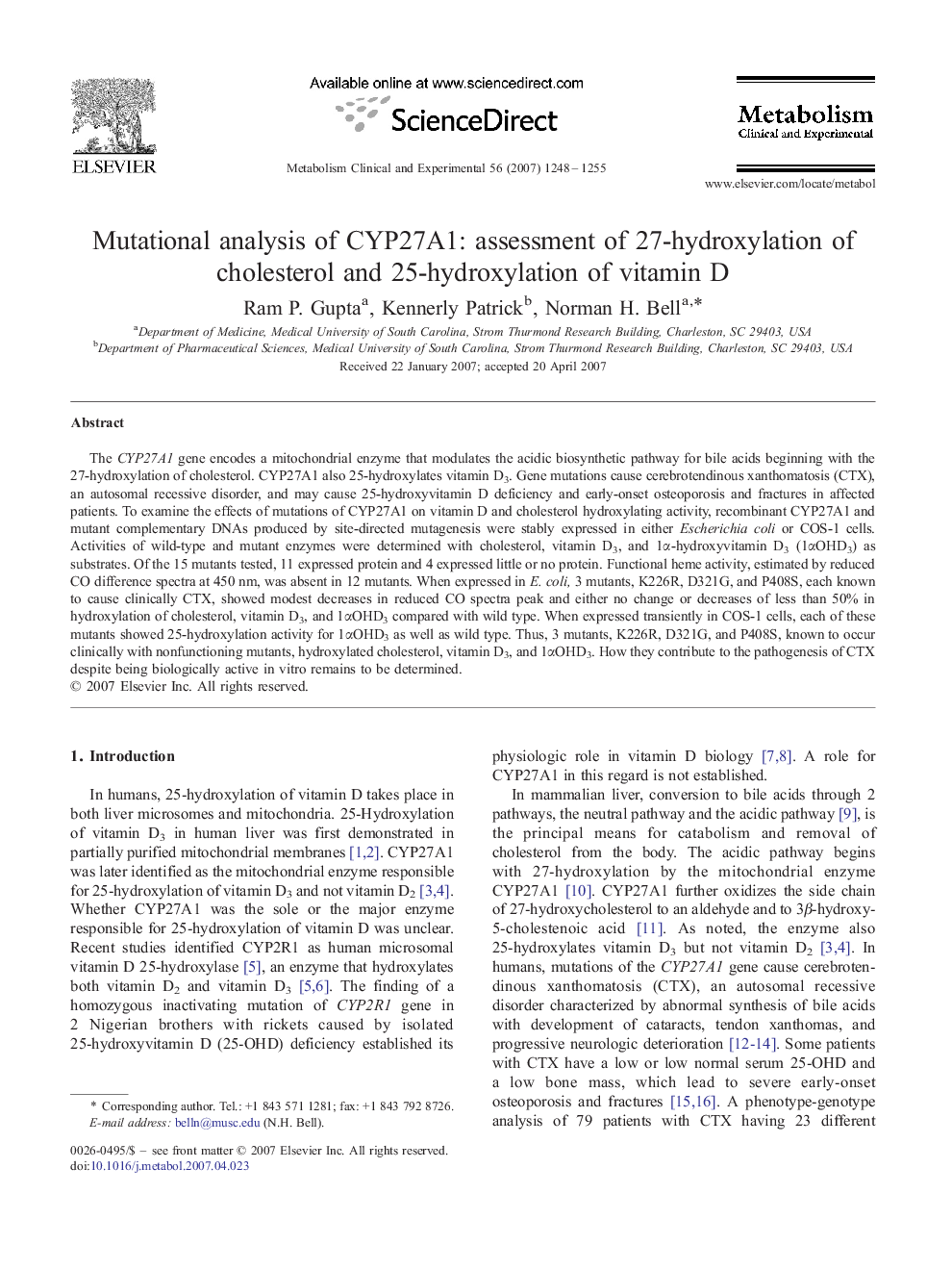| Article ID | Journal | Published Year | Pages | File Type |
|---|---|---|---|---|
| 2807710 | Metabolism | 2007 | 8 Pages |
The CYP27A1 gene encodes a mitochondrial enzyme that modulates the acidic biosynthetic pathway for bile acids beginning with the 27-hydroxylation of cholesterol. CYP27A1 also 25-hydroxylates vitamin D3. Gene mutations cause cerebrotendinous xanthomatosis (CTX), an autosomal recessive disorder, and may cause 25-hydroxyvitamin D deficiency and early-onset osteoporosis and fractures in affected patients. To examine the effects of mutations of CYP27A1 on vitamin D and cholesterol hydroxylating activity, recombinant CYP27A1 and mutant complementary DNAs produced by site-directed mutagenesis were stably expressed in either Escherichia coli or COS-1 cells. Activities of wild-type and mutant enzymes were determined with cholesterol, vitamin D3, and 1α-hydroxyvitamin D3 (1αOHD3) as substrates. Of the 15 mutants tested, 11 expressed protein and 4 expressed little or no protein. Functional heme activity, estimated by reduced CO difference spectra at 450 nm, was absent in 12 mutants. When expressed in E. coli, 3 mutants, K226R, D321G, and P408S, each known to cause clinically CTX, showed modest decreases in reduced CO spectra peak and either no change or decreases of less than 50% in hydroxylation of cholesterol, vitamin D3, and 1αOHD3 compared with wild type. When expressed transiently in COS-1 cells, each of these mutants showed 25-hydroxylation activity for 1αOHD3 as well as wild type. Thus, 3 mutants, K226R, D321G, and P408S, known to occur clinically with nonfunctioning mutants, hydroxylated cholesterol, vitamin D3, and 1αOHD3. How they contribute to the pathogenesis of CTX despite being biologically active in vitro remains to be determined.
